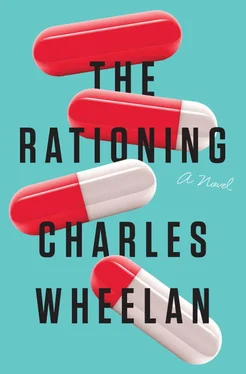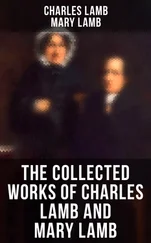The Director, no naïf when it came to predatory scientists with huge egos, said quickly, “Jenna has some things to do for me. She’s not part of the virus working group.”
Giscard touched Jenna lightly on the shoulder: “We will talk later.”
“That would be great,” Jenna said.
With the flirtation out of the way (for the time being), a group of six or seven of us retired to our small windowless room. Tie Guy spoke first, outlining his statistical findings. A scientist from the CDC summarized what we had learned about Capellaviridae , including its similarity to the influenza virus. Giscard behaved differently in this environment—more scientist and less French showman. It may have been my imagination, but I think he even twirled his scarf less often. Moments earlier I had felt a strong urge to strangle him with the scarf, but now I could not help admiring how his mind worked. I presented my theory that the North American dust mite was somehow using Capellaviridae to gain an evolutionary advantage. “I suspect this virus has an on-off switch—somewhere, somehow,” I said. “The dust mite controls that switch and benefits as a result.”
“Yes, this is right,” Giscard said confidently.
“We can’t find any evidence of that,” a CDC scientist objected. “The virulent and dormant forms of the virus are identical.”
“That’s not right,” Giscard said dismissively. “One form of the virus makes you sick, one does not. Those are not the same. They cannot be the same.”
“They have the same DNA,” the scientist replied.
Giscard grew even more dismissive, something I did not think possible. He made a strange pffff sound, blowing air out his pursed lips. He pointed at a young CDC scientist sitting next to him. “You have DNA. I hit you with a mallet. Your DNA does not change. But now you are different because your brain is on the floor.” He paused as we digested and recoiled from his analogy, not least the scientist whose hypothetical brain was now lying on the floor. Giscard continued, “If you people start with the assumption that the virulent form of the virus is no different than the dormant virus, then of course you will miss the difference!” I watched the body language of the scientists around the table as this French interloper chided them for their sloppy work. There were a few sets of rolled eyes, but I suspect most in the room were feeling some variation of what I was feeling, namely that Giscard was a complete asshole who was probably right.
“Healthy people carrying Capellaviridae have no antibodies,” I offered. “It’s not that their bodies are fighting it off. There is nothing to fight off. It’s innocuous—until it’s not.”
“Okay, yes,” Giscard said, encouraging this line of thought. I felt like an elementary school student who has answered a math problem correctly, basking in the admiration of my teacher. I hated myself for it, but I wanted Giscard to appreciate my input.
“So what’s happening is not a difference in reaction to the virus,” I continued. “It’s not that some people fight it off and others don’t. The virus itself appears to be behaving differently. Maybe there is a difference at the molecular level.” [26] I am certain that I was the first person in the room to suggest that the virulent form of Capellaviridae was different than the benign form at the molecular level. Several people who were in the room have affirmed this. Giscard, however, maintains that he had always believed this might be the case and that he had traveled to the U.S. to share this hypothesis with us. From this point on, as I will subsequently note in the text, most of the important details from this meeting—in terms of who said what—are still in dispute.
“Exactly,” Giscard said.
“The President is going to speak in about twenty-five minutes,” Tie Guy said.
Giscard turned to him, seemingly annoyed by the interruption. “The President is not going to help us understand the virus,” he said.
“I’d like to watch,” one of the CDC scientists said with a hint of hostility.
“We have time to waste?” Giscard asked.
“I’ll stream it on my laptop,” I said. “We don’t have to interrupt what we’re doing.”
The rest of the meeting is the subject of what might generously be called “competing memories” (which have in turn generated competing news accounts, competing lawsuits, competing memoirs, and even one pathetically inaccurate French documentary, The Hero in the Room ). Here is what we do know: (1) the biochemists began comparing the molecular structures of the dormant and virulent Capellaviridae viruses; (2) we proposed a hypothesis whereby Capellaviridae is rendered indolent by the disruption of a key protein; and (3) we further hypothesized that the North American dust mite transfers an enzyme to humans that renders Capellaviridae harmless. Our theory left some crucial questions unanswered (e.g., Why did this effect appear to be only temporary?). But for the first time, we had an elegant and testable hypothesis that could explain not just Capellaviridae , but potentially all lurking viruses. Most important, if we were correct, we would in theory have an antidote for the virulent form of Capellaviridae : the mystery enzyme.
The biochemists immediately reached out to their colleagues at the NIH and in academe to begin examining the protein structures of the virulent and indolent Capellaviridae viruses. I briefed the NIH Director on our progress. She in turn called the Chief of Staff to report the potential breakthrough. And Lionel Giscard, as best as I can tell, immediately set to work claiming credit for all the important work we had done.
PART 8

THE HYPOTHESIS AND THE EGO
THE PRESIDENT WOULD SPEAK FROM AIR FORCE ONE immediately after the Acting HHS Secretary gave his briefing to Congress. The Communications Director was adamant that there be as little time as possible between the congressional briefing and the beginning of the President’s speech. “I don’t want them to have time to make a single tweet—not even two hundred and eighty characters,” he told the Acting HHS Secretary. “And keep it simple: here’s what’s happening, here’s what we’re doing, and here is our plan in the unlikely event that we encounter a temporary shortage of Dormigen.”
“Is that still an unlikely event?” the Acting Secretary asked. “I thought the whole point of the briefing was to make people aware of the seriousness of the situation.”
“Okay, don’t say ‘unlikely.’” the Communications Director conceded. “But I want it clear that we are still pursuing multiple options to forestall a shortage.”
“How about I just say that?” the Acting Secretary asked.
“Fine,” the Communications Director said. “But whatever you do, don’t use the word ‘ration.’”
“We are going to prioritize who gets Dormigen in the event of a shortage,” the Acting Secretary suggested.
“Perfect.”
“Because that’s not rationing.”
“No one in this administration is going to use that word,” the Communications Director declared.
“And what about Cecelia Dodds?” the Acting Secretary asked.
“What about her?” the Communications Director asked impatiently.
“It’s hard to say everything is going to be okay as she drifts in and out of consciousness.” That was the latest update from the hospital. Cecelia Dodds was being treated with an experimental German antibiotic that had proven effective against respiratory infections. So far, she had not responded positively.
Читать дальше













